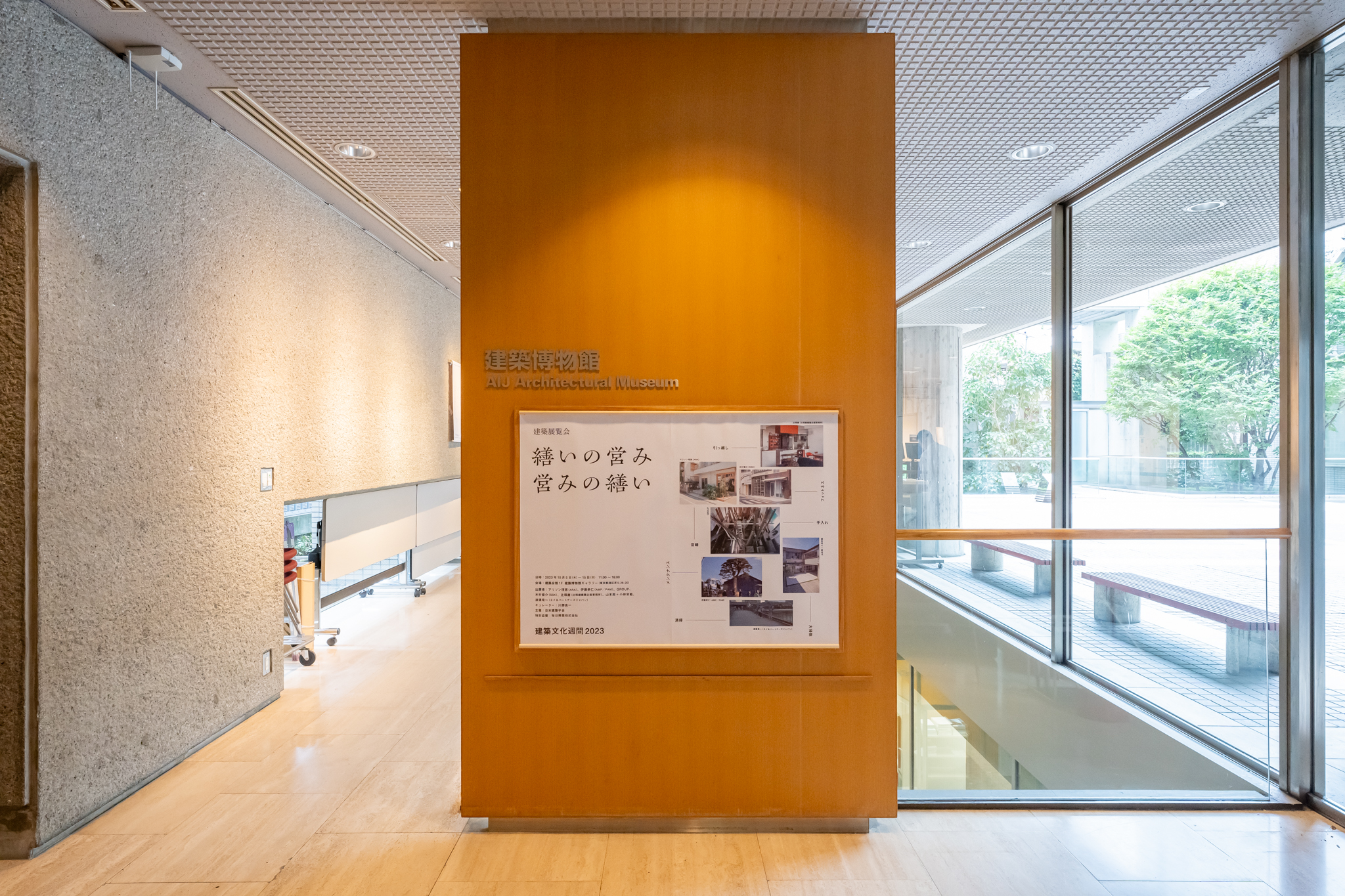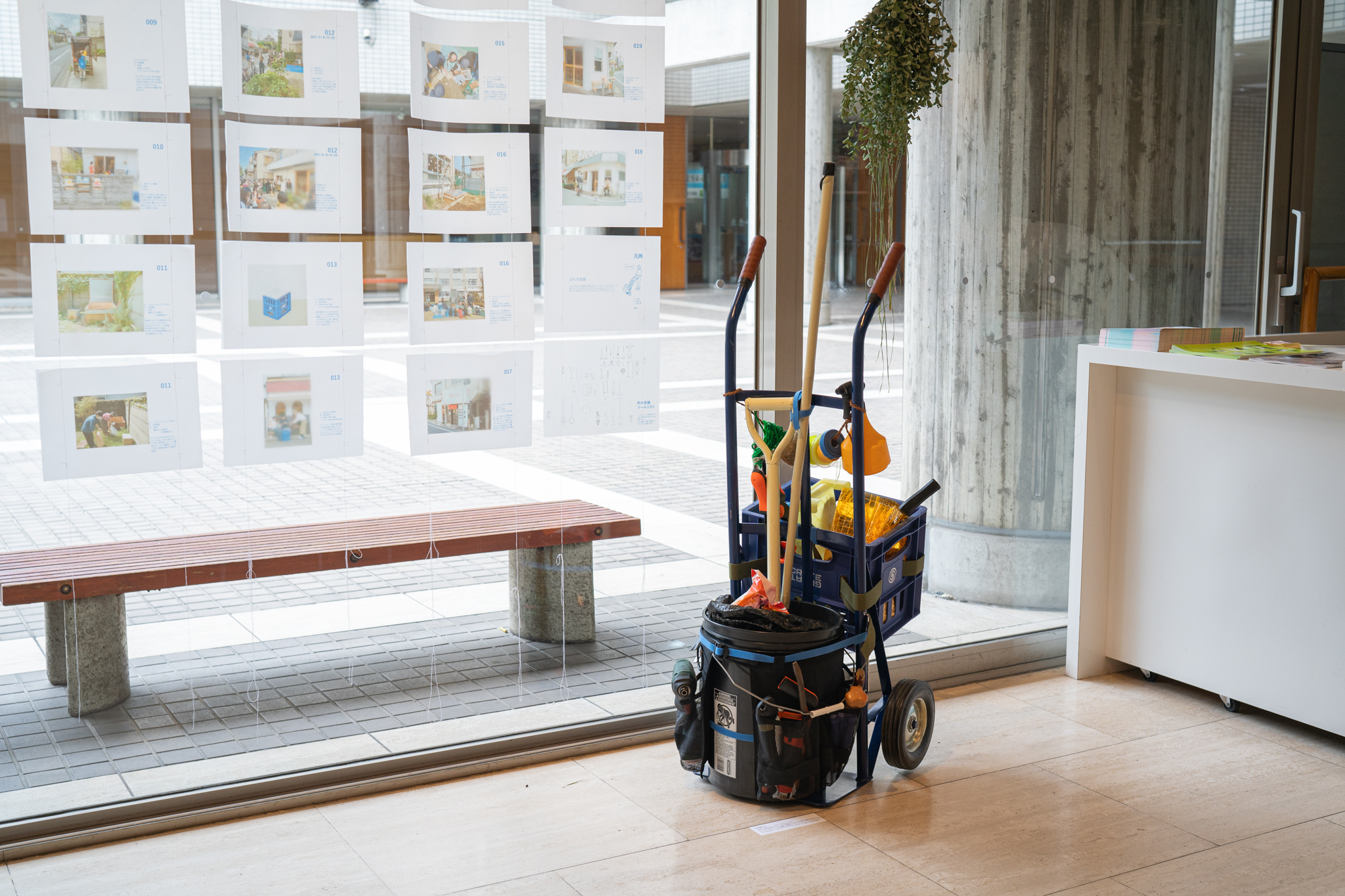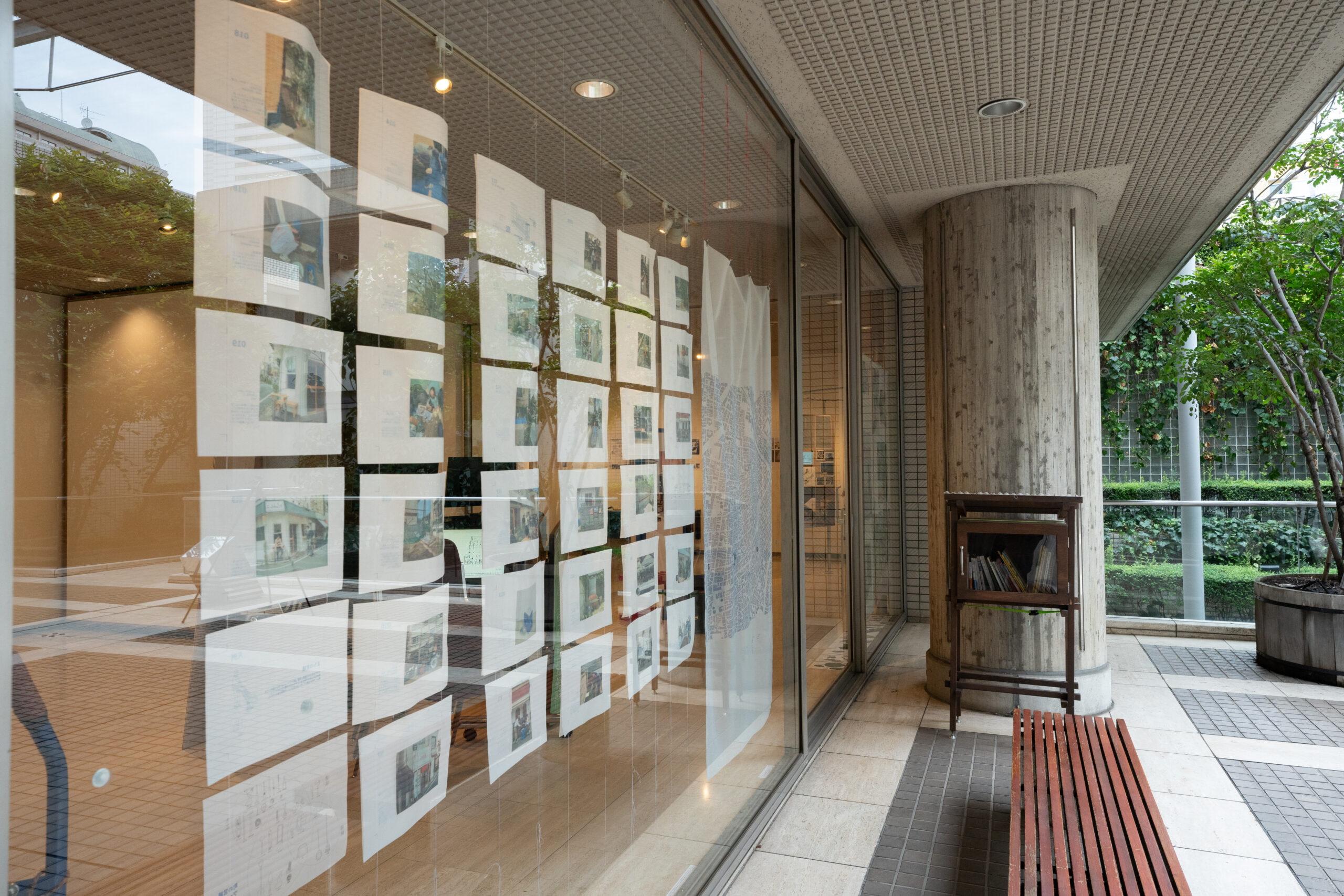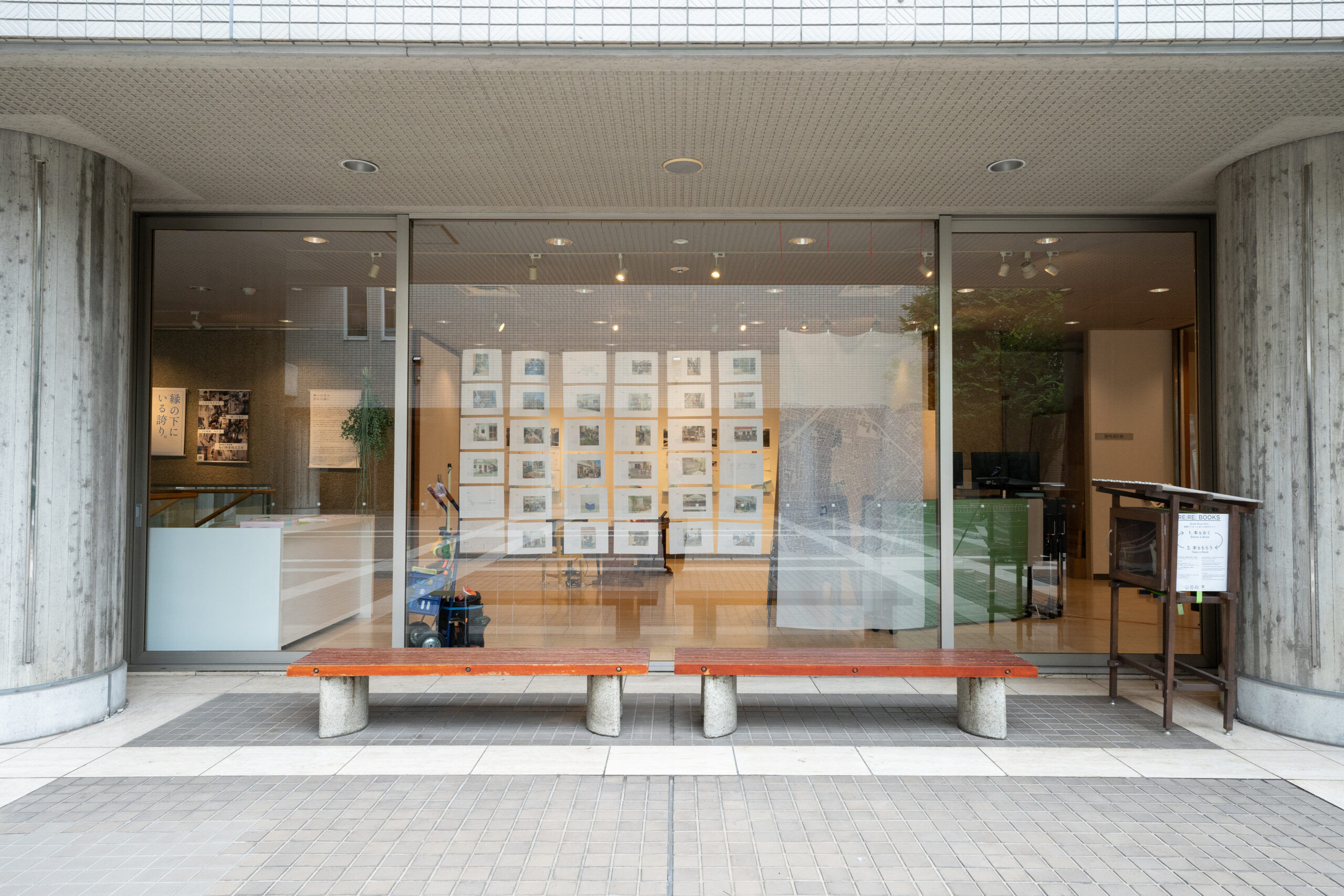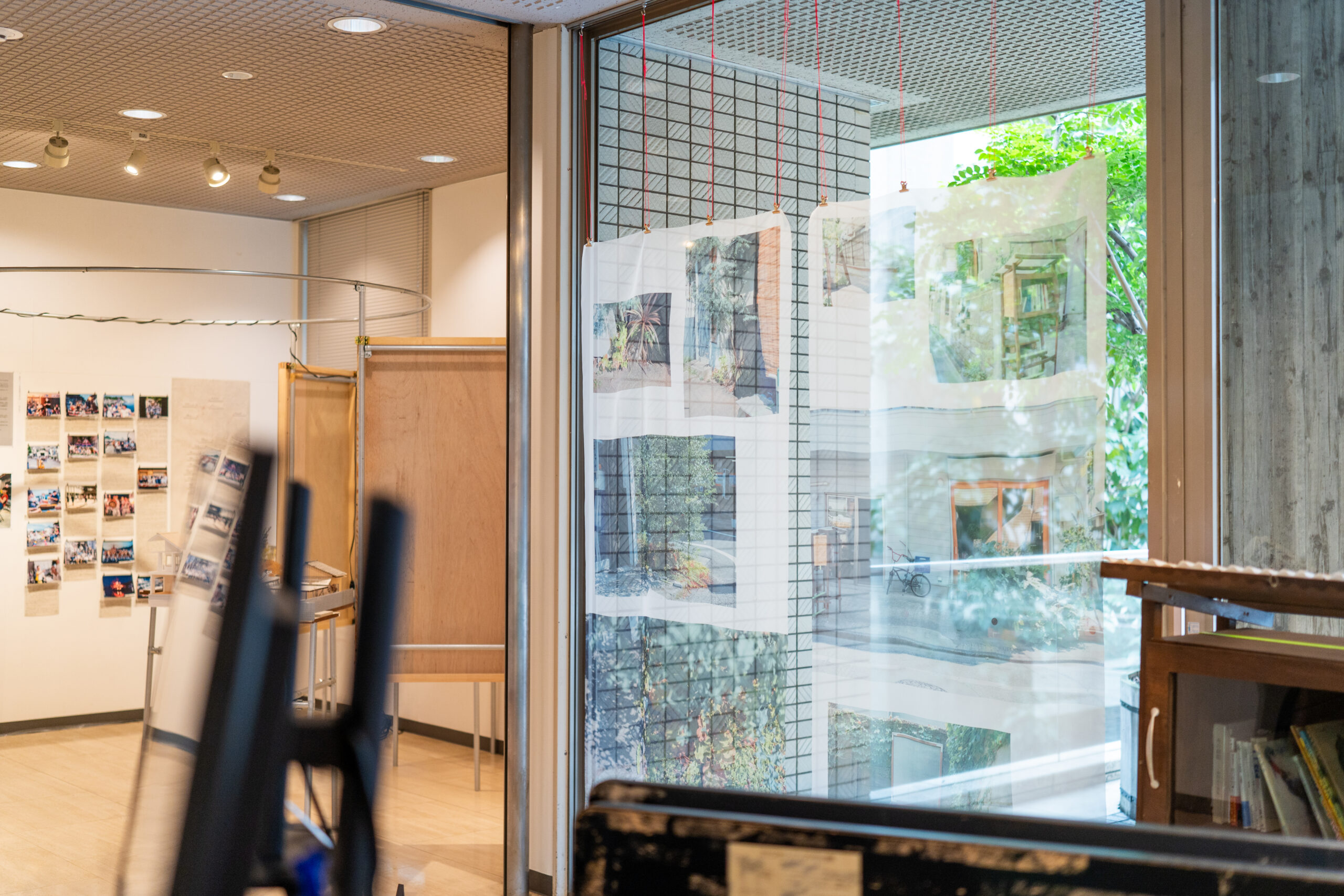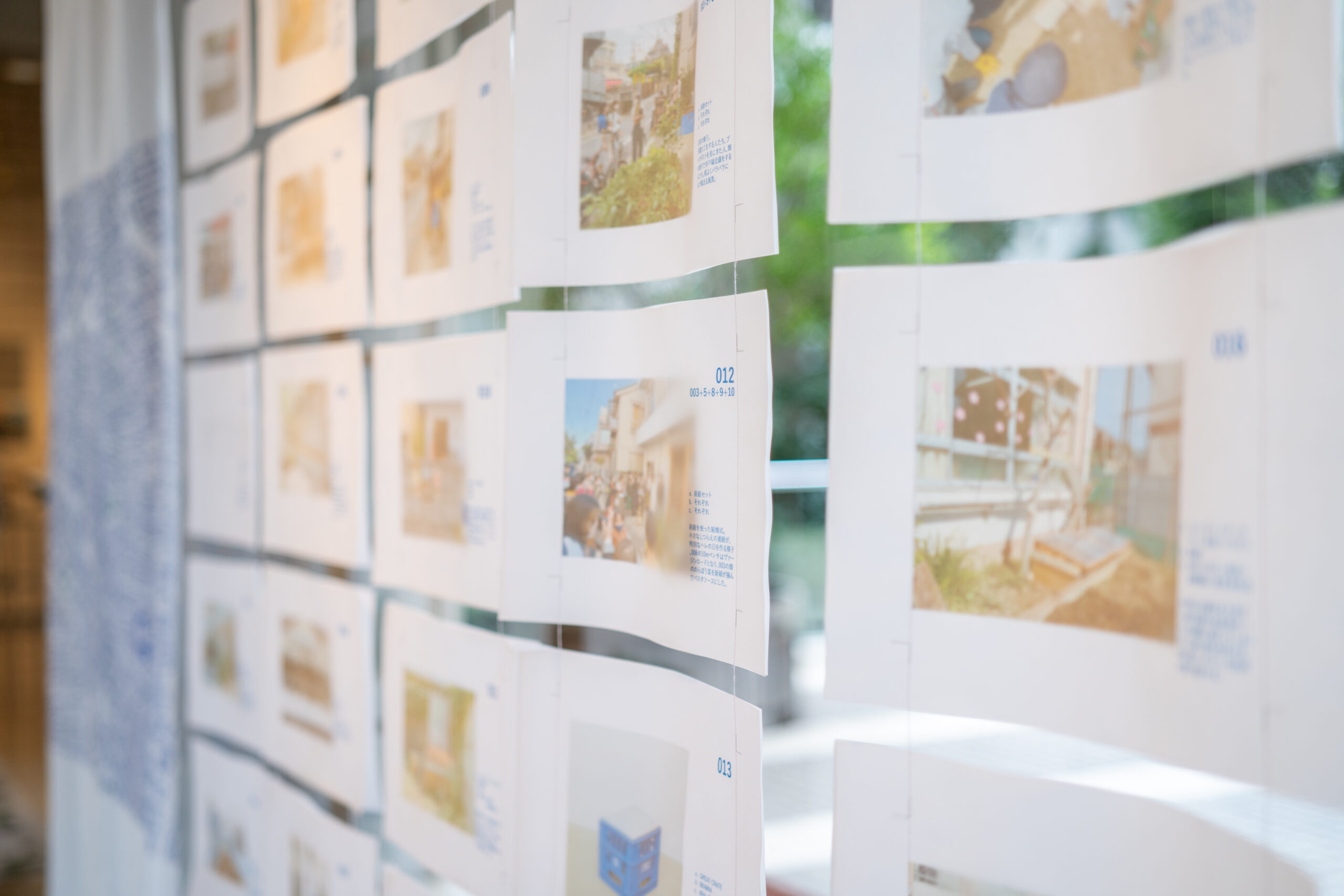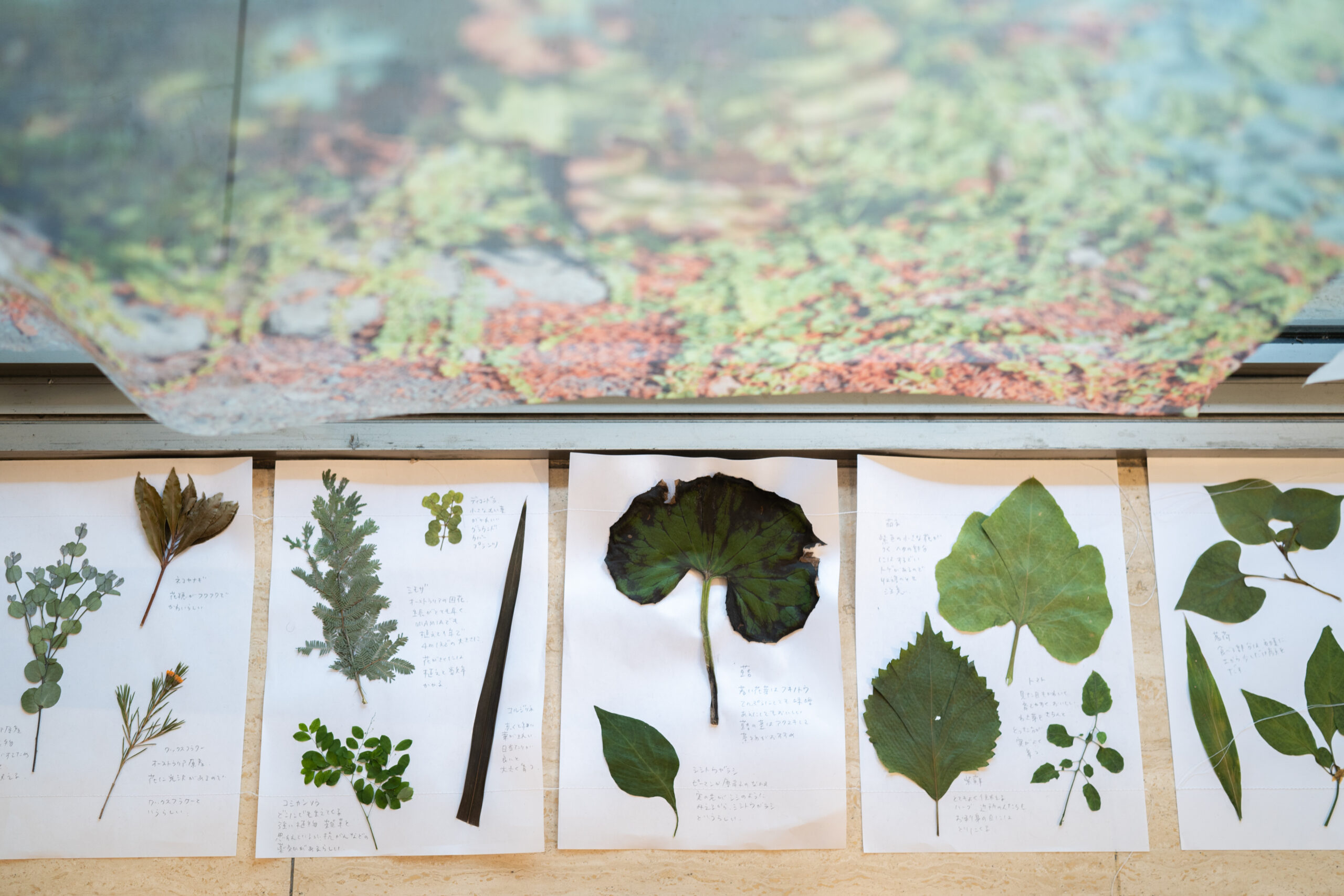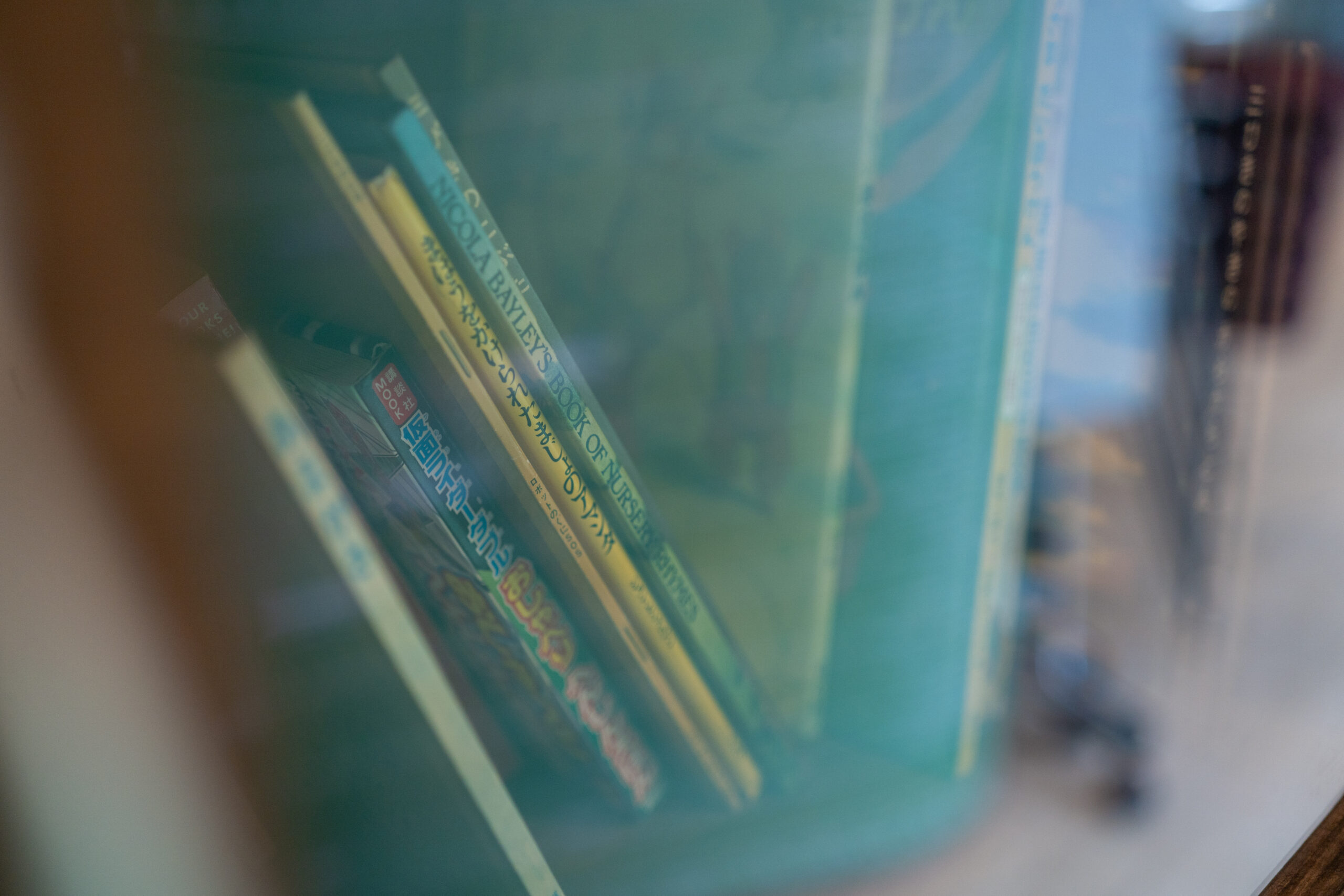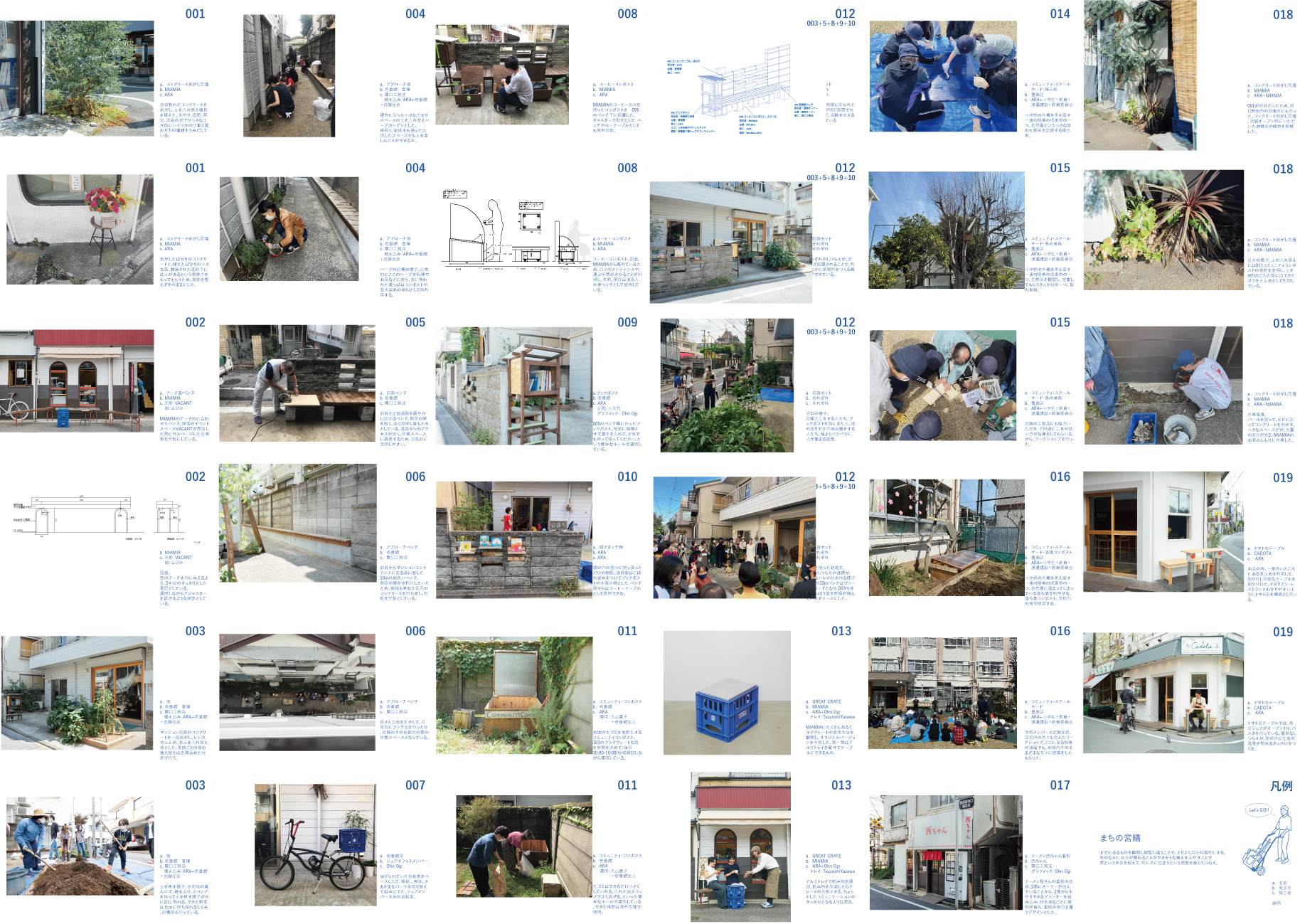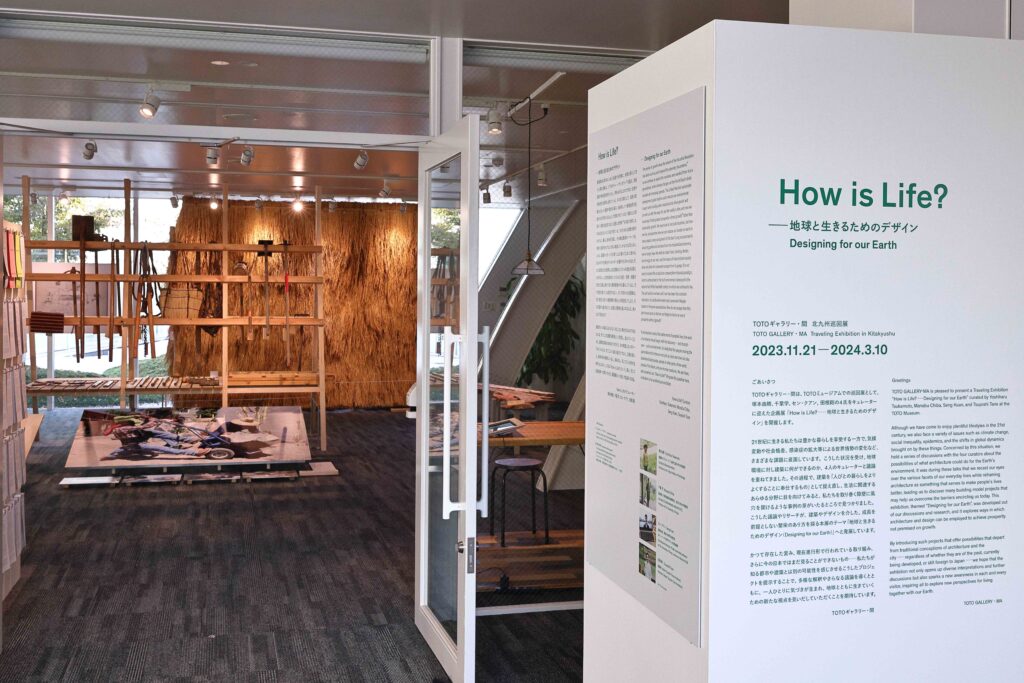展覧会
Activities of mending, Mending of activities- Design
- ara
- curator
- Shinichi kawakatsu
- Photo
- Kaori Yamane
繕いの営み / 営みの繕い
町の営繕
設計事務所の仕事の一環として「町の営繕」という活動を始めた。
自分たちの暮らす町を反省的な眼差しで捉え直し、快適に使い続けられるように手を入れながら小さな部品を少しずつ整える取り組みであり、町を自分たちのものとして実感する感覚を育む、物理的なしつらえについてのフィールドワークである。
散歩の途中で座れるベンチ、本の交換ができるブックポスト、作物の手入れに参加できる畑、地域活動の拠点となる校庭。一つ一つはなんてことはないものでも、町のなかに自分が関わることができそうなしつらえが増えると、家単体を超えて、町に共に住まうという考え方が醸造されていく。
町は行政が管理していて、私たちは税金を払ってそのサービスを受けている。不具合があったら行政に電話して、来てくれるのを待つ。だとすると、私たちは自分たちが生きる場である町に、何の作用も及ぼせないまま暮らしていくのだろうか?まるでサービスとして町を受け取るのだろうか?
成長モデルの元につくられた生存と消費を目的とした現代の町を、人間が豊かに生きることを支える場とするために、綻びに当て布をし糸を重ねて繕うように、小さな身振りを継続的に積み重ねる取り組みである。
展示物
カーテン:
壱番館のシェアオフィスで使用するカーテン。左からコーヒー店MIAMIAの外構写真、壱番館の外構写真、町の営繕プロジェクトマップをプリントしている。約1kmの範囲内にプロジェクトが点在する様子を示す。
プロジェクトリスト:
マップ内にナンバリングされたプロジェクトの概要。散歩の途中で座れるベンチ、本の交換ができるブックポスト、作物の手入れに参加できる畑、地域活動の拠点となる校庭。一つ一つはなんてことはないものでも、町のなかに自分が関わることができそうなしつらえが増えると、家単体を超えて、町に共に住まうという考え方が醸造されていく。
ツールカート:
都市生活者が町を自らケアし自分の場所とするために必要な道具を詰め込んだコンパクトなカート。
町の営繕の必需品で、ホームセンターやオンラインで手に入るものをブリコラージュし、カスタマイズすることで誰にでも作成可能。
ブックポスト:
普段は壱番館の前庭で稼働中のもの。誰かに読んでもらいたい本を入れる、気に入った本を持っていく、そのどちらか(もしくは両方)をやる、というだけの簡単なしくみである。
日時:2023年10月5日~15日
開催地:建築博物館ギャラリー
出展者:アリソン理恵(ARA)、伊藤孝仁(AMP / PAM)、GROUP、 木村俊介(SSK)、辻琢磨(辻琢磨建築設計事務所)、山本周 + 小林栄範、 渡邉 竜一(ネイ&パートナーズジャパン)
キュレーター:川勝真一
グラフィックデザイン:平野拓也
主催:日本建築学会
特別協賛:毎日興業株式会社
Repairing the Town
As part of our work at a design firm, we have started an activity called “repairing the town.
It is an effort to reevaluate the town in which we live from a reflective perspective, and to gradually rearrange the small parts of the town by putting in touches so that it can continue to be used comfortably.
A bench to sit on during a walk, a book post where one can exchange books, a field where one can participate in the care of crops, and a schoolyard that serves as a base for community activities. Each of these may seem trivial, but as more and more things are added to the town that I can be a part of, the idea of living together in the town, beyond the house itself, begins to brew.
The town is managed by the government, and we pay taxes to receive its services. If there is a problem, we call the government and wait for them to come. If that is the case, are we going to live without being able to exert any effect on the town, the place where we live? Will we receive the town as if it were a service?
This is an effort to continuously accumulate small gestures, just like applying fabric to a tear and patching it up with layers of thread, in order to make the modern town, built for survival and consumption based on a growth model, a place that supports a rich life for human beings.
Exhibits
Curtains:
Curtains for the shared office in Ichibankan. From left to right: a photo of the exterior of the MIAMIA coffee shop, a photo of the exterior of Ichibankan, and a printed map of the town’s repair projects. It shows how the projects are scattered within an area of about 1 km.
Project List:
Summary of projects numbered in the map. A bench to sit on during a walk, a book post where people can exchange books, a field where people can participate in the care of crops, and a schoolyard that serves as a center for community activities. Each of these may seem insignificant, but as more and more things are added to the town that you can be a part of, the idea of living together in the town, beyond the house itself, begins to brew.
Tool Cart:
A compact cart filled with the tools city dwellers need to care for their town and make it their own place.
A necessity for town upkeep, it can be created by anyone by bricolaging and customizing items available at home improvement stores or online.
Book Post:
Usually in operation in the front yard of the first building. It is a simple mechanism to put in a book you want someone to read, or to take a book you like, or to do either (or both).
- Design
- ara
- curator
- Shinichi kawakatsu
- Photo
- Kaori Yamane

